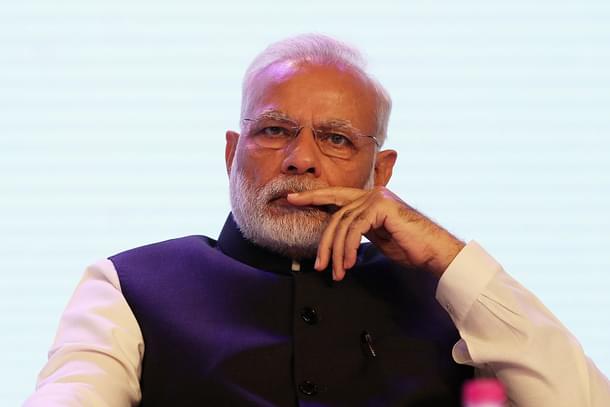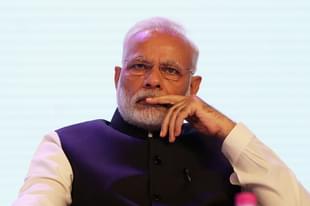Politics
Innovation Nation: The Indian Right’s Real Idea Is Disruptive Innovation
Rajeev Srinivasan
Dec 01, 2016, 06:57 PM | Updated 06:57 PM IST
Save & read from anywhere!
Bookmark stories for easy access on any device or the Swarajya app.


Author Aatish Taseer wrote an opinion piece in the New York Times titled “Does the Indian Right have any ideas?”. This goes to the heart of the matter: the Left believes it has all the ideas and all the answers. Taseer is not an extreme Leftist as many others in India are, so he doesn’t quite qualify for the #SJW and #AltLeft rubrics that they deserve, but he does deserve a response.
Especially since Taseer’s perspective was in the context of the India Ideas Conclave 2016, which I attended, and since he quoted my Swarajya column there on ‘good’ dissent and ‘bad’ dissent, I feel entitled to retort.
The old bromide about the Left having all the answers (or even any of the answers) is hogwash. Even though I believe the imported terms ‘Left’ and ‘Right’ are not meaningful in the Indian context, I’ll use them anyway for the sake of continuity.
Let me begin by referring to a book I bought in the 1990s while living in the San Francisco Bay Area: Kerala: Radical Reform as Development in an Indian State by the Food First Institute, also of San Francisco. It is a slim, well-written 1994 volume, based on first-hand field research, with lots of tables and earnest arguments leading to the conclusion that Kerala’s famous Quality of Life Index is due to Leftist land reform and ration shops.
It is also almost totally, comprehensively, devastatingly and tragically wrong.
I know this, as a native son born and brought up in Kerala. After my years in California, I have now been living in Kerala for a long time. In fact, Kerala’s quality of life indices were always better than those of the rest of the country, for two inter-twined reasons: maritime trade, and the monsoons. This well-watered land is blessed with topography, climate and native plant species that made it the source of many spices, especially the coveted black Tellicherry pepper. The trade in that, plus cloves, nutmeg, cinnamon and so on made Kerala rich, and the Roman Pliny the Elder bemoaned that his nation’s coffers were empty because they had to pay in gold for these spices. Evidence lies in the riches, including Roman gold coins, in the Sree Padmanabha Swamy temple’s cellars.
No, it was not Marxism, but three other Ms - matriliny, maharajahs and a monk - that led to development in Kerala. Matriliny among many in the numerically strong Hindu jatis, Ezhavas and Nairs, meant women controlled the family property, naturally empowering them.
The maharajahs of Travancore devised an ingenious system whereby they ruled only as regents of the presiding deity, Sree Anantha-Padmanabha Swamy, and their successors were their nephews by matriliny: this led to a certain humility and lack of greed. They also paid attention to education, so that literacy was always higher than in the rest of India. In addition to government schools, they also allowed Christian missionaries to set up schools.
The third was the reform-minded Saivite monk Sree Narayana Guru. He was the one who created a sense of egalitarianism in Kerala, which was once marred by jati-based oppression. Taking his advice to heart, the subaltern lower-jatis, in particular the Ezhavas, bettered themselves through self-help, education and organisation.
It is these things that led to the rise of Left sentiment and equality, not vice versa. A literate population is susceptible to the siren-song of the Left, as can be seen in college campuses all over the world. And radical egalitarianism is also ripe soil for Leftism. Thus Communists came to power in Kerala in the 1950s.
The story has been bleak since then: there ceased to be development in Kerala. The once-thriving agricultural sector in one of the greatest rice-growing areas of the world has ceased to exist, because well-meaning but oppressively high minimum wages made paddy cultivation unviable. The only sector that survives is plantation crops, where powerful vested interests prey on workers and manipulate price support by the government.
There is no industry worth speaking of; the major export is of unskilled labour to toil in the 50 degree C construction sites of West Asia; of skilled labour such as nurses to staff hospitals in the rich world; and professionals such as engineers and doctors to various parts of the world. From being a productive earner of foreign exchange, Kerala has now become a money-order economy. When Arabs run out of oil, Kerala will starve (I am not exaggerating: Kerala, as of 2014, gets 84 per cent of its staple rice from other states). That is the reality of Amartya Sen’s much-ballyhooed “Kerala model”.
But I brought up the book not only to point out how badly wrong it got its logic, but also to suggest that radical reform as development is a Right (in Taseer’s phraseology) practice as well, and it is ending up in Disruptive Innovation. One part of radical reform is what we’re now seeing in practice: demonetisation and a less-cash economy that will, along with GST, lead to smaller government as bureaucrats and politicians lose their ability to use discretionary power for rent-seeking behaviour. And the taxman has a pretty good idea of all transactions as well.
The next shock will be the proposed assault on black wealth in real-estate by scrutinising proxy (benami) ownership. If, at the same time, land records are migrated online (even to a block-chain-based trusted distributed ledger system) one of the biggest reasons for poverty will go away. As Hernando deSoto has suggested, lack of verifiable property rights and thus the inability to use land as collateral is the bane of poor people everywhere.
These reforms are a disruptive innovation. In the theory of the failure of leading firms, as proposed by Clayton Christensen, an incumbent is meeting the needs of the mainstream customer population. Ignored by that incumbent, an insurgent comes into the market with a product that may have less performance than the incumbent’s, and may satisfy a less demanding customer segment.
The paradox is that the low-end insurgent may then steadily move up the performance curve, and at some point may meet the needs of the mainstream. At that point, the mainstream simply switches wholesale to the insurgent, leaving the incumbent without a customer base, and it fails.
Something along these lines has happened with the Patanjali brand in FMCG. I’m not implying that Patanjali products appeal only to less demanding customers (that is not true), but their meteoric rise shows that a) customers are willing to switch wholesale, b) the value proposition is more than the product itself, but includes the attached emotive message. Marketing works, in case anybody doubted it.
This simple model of disruptive innovation, as seen in the diagram, is applicable in politics as well as in business. This is precisely what the Right is doing.
Consider the Left and in particular the Congress as the incumbent, providing a ‘product’, which is its vision of the future of the country. That vision has held the voter base in thrall for several decades, partly because we were brainwashed into believing there is no alternative, through control of the media and education. It was a negative vision of same-old-same-old-tired-slogans, banana-republic, dynasty, mai-baap sarkar.
But the insurgent BJP, and especially Narendra Modi, was able to appeal to a small but growing voter group, and this became the mainstream in 2014, thus leading to the landslide victory. Modi’s innovation: he gave them that most precious of things – hope. Hope that governance can lead to prosperity. Hope for a better future for their children.
Here is a graph showing the BJP’s vote share in percentage in general elections.
That massive switch between 2009 and 2014 shows the point of inflexion, where the customer abandons the incumbent and moves on to the insurgent. What has happened is that the stranglehold of the Alt-Left SJW types on media has been challenged by social media, where an uncensored plethora of ideas (some admittedly extreme) make for Freedom of Expression.
I predicted five years ago in a column in DNA “India is finally seeing the birth of alternative journalism” that such a thing would come to pass: the eclipse of biased and motivated journalism. I was delighted, in passing, that Bollywood superstar Amitabh Bachchan praised that piece on his blog! But anyway, the net result of the beginning of free-thinking is that the Right has gained momentum.
And it is not only in votes, either. Three massive shocks to the standard-bearers of so-called ‘liberalism’ - the Modi, Brexit and Trump elections - have showed us that their comfortable echo-chambers do not reflect reality. In fact the very word is now, deservedly, a term of abuse, as I said recently on Swarajya “Let’s retire the word ‘liberal’ and use ‘Alt-left’ or #SJW instead’.
The alleged ‘ideas’ from the Left have been shown to be largely hollow. The Left have committed a crime against humanity by preventing 500 million Indians from clawing their way out of poverty. We stood by as spectators while every other Asian nation passed us by.
As Nassim Nicholas Taleb, the celebrated author of Black Swan commented, many of the Left elites’ certainties are demonstrably false: medical dogma on fat and cholesterol has been reversed; almost half of psychological research is unreplicable; micro and macro economics have less than the predictive power of astrology; and a large percentage of clinical trials are not replicable.
Thus, don’t cry for the Left because their ‘ideas’ are largely bogus. The Right’s ideas are innovative, disruptive and are overturning the status quo. In the fullness of time, new disruptive innovators will overturn the currently ascendant Right’s ideas well. That would be proper, creative destruction, as predicted by Joseph Schumpeter.
Rajeev Srinivasan focuses on strategy and innovation, which he worked on at Bell Labs and in Silicon Valley. He has taught innovation at several IIMs. An IIT Madras and Stanford Business School grad, he has also been a conservative columnist for twenty years.





